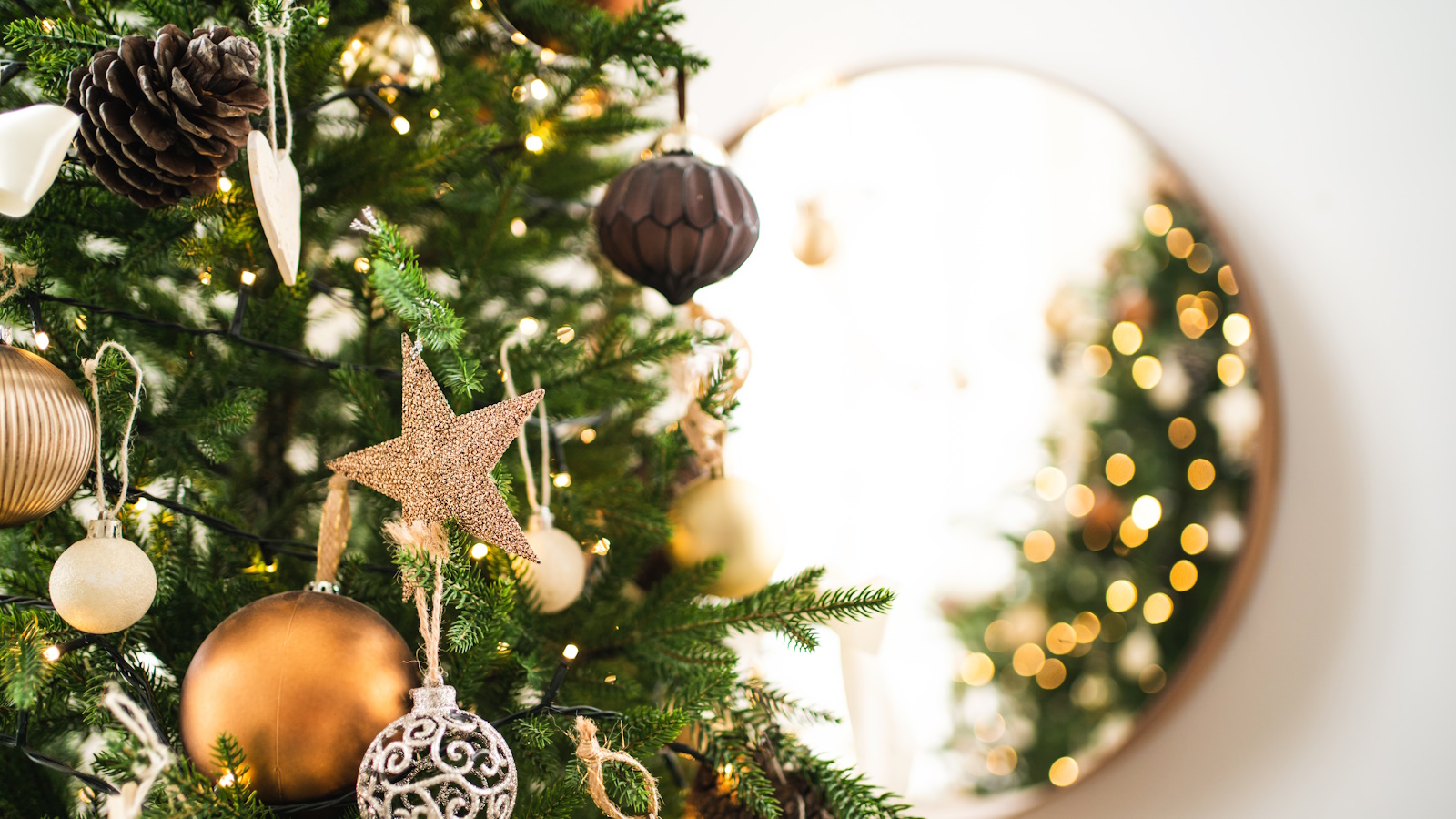
The Christmas tree is the centrepiece of the holiday decorations. You want to get the best specimen you can and choose the right Christmas tree that fits in with your home, your style, and your family set-up.
So how do you pick between the different varieties of Christmas trees that are available? The size, shape, and color must be considered before you head out to select your Christmas tree, as well as the type of needles the tree has and how long it will hold onto them.
Taking all the factors into consideration means that you come home with the perfect Christmas tree for the holiday season and it will still look fantastic come the big day.
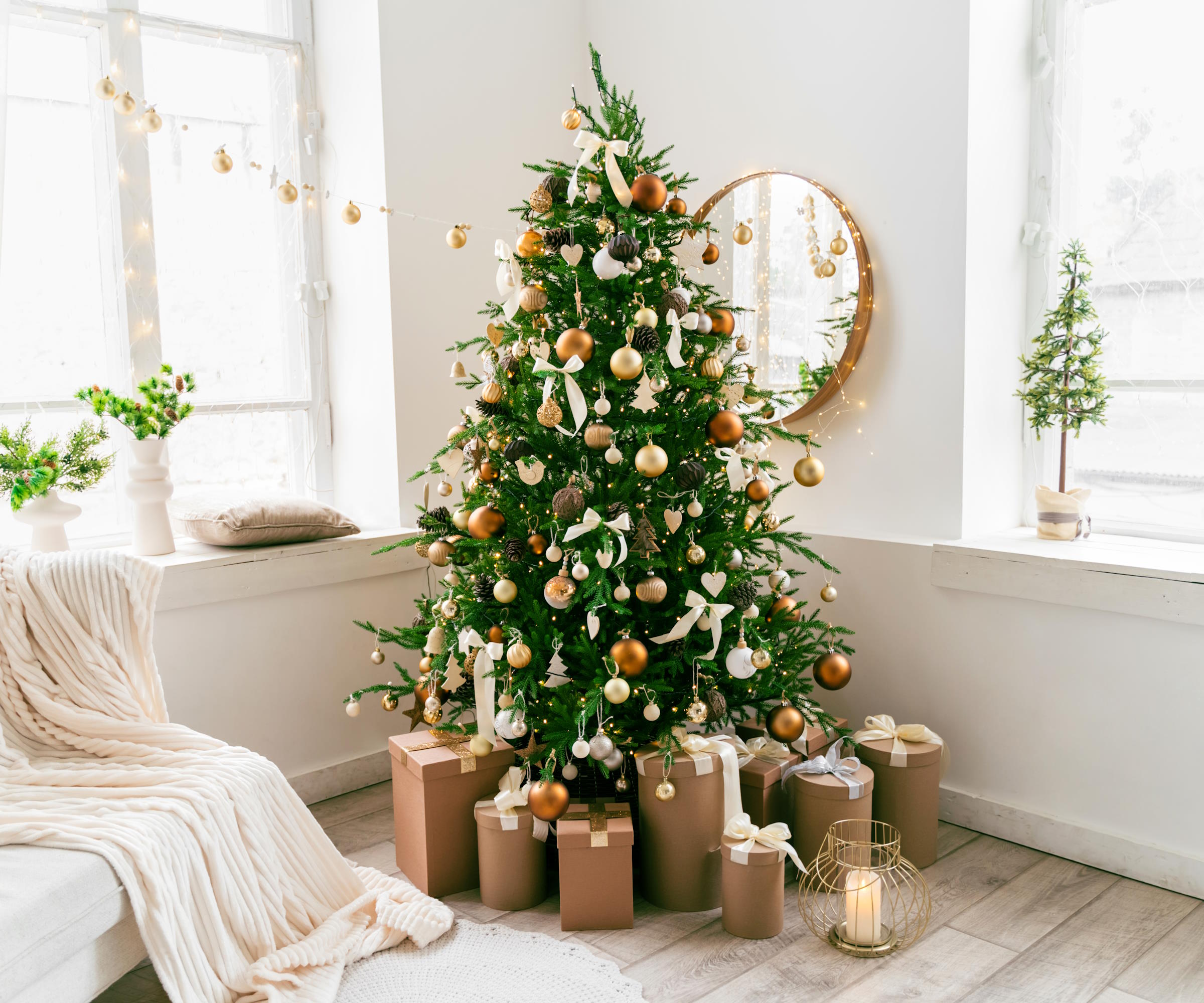
How to choose a Christmas tree - 4 factors to consider
When putting together your Christmas tree ideas for the festive season, there are a number of factors that should come into play. We hear tips from gardening and interior design experts to help you pick the ideal Christmas tree for your home.
1. Consider the size
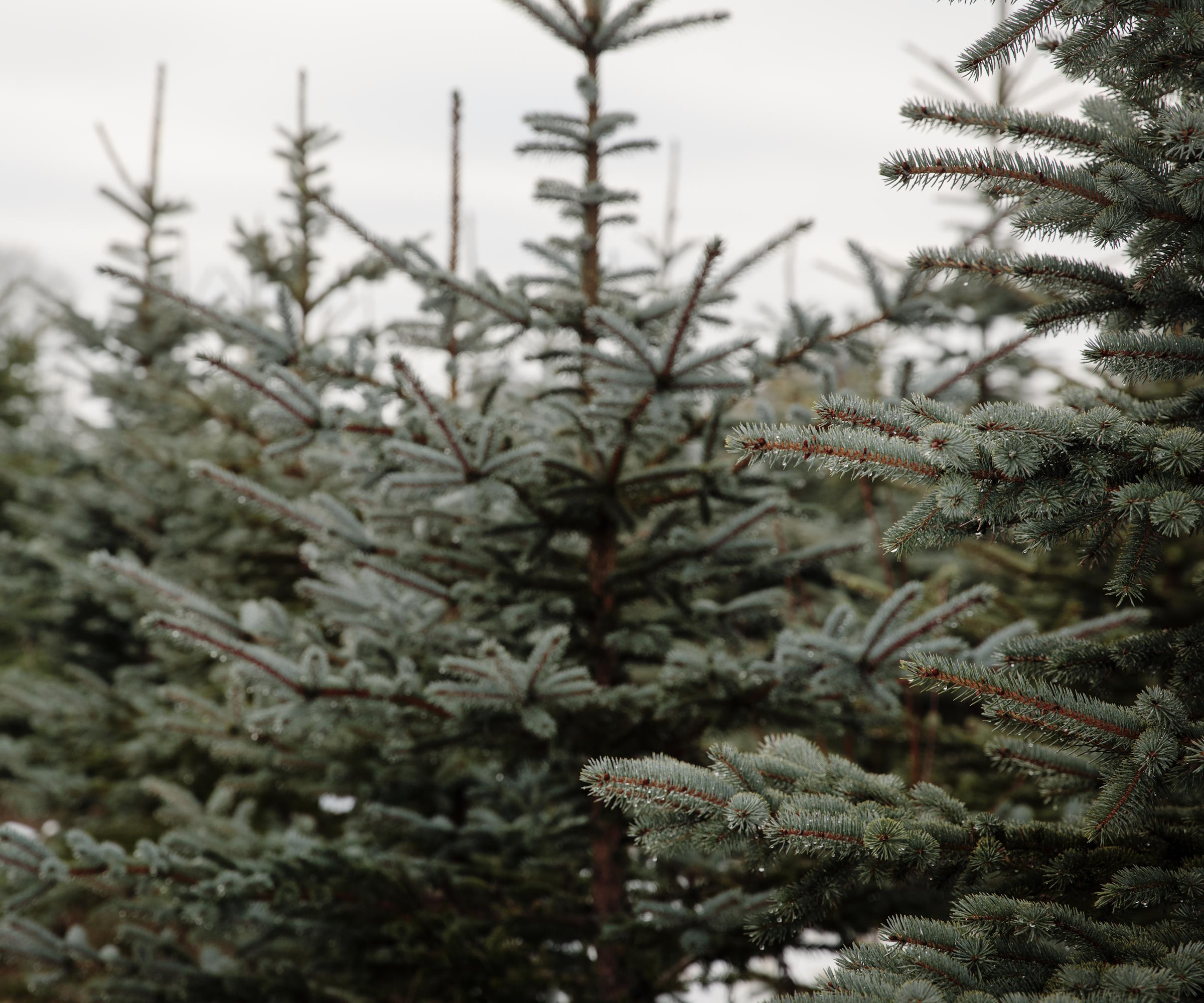
Size matters and it is the most important thing when thinking about choosing your Christmas tree. Before heading out of the house to pick your tree, make sure you know your space so you come home with a Christmas tree that fits into your home perfectly. That includes the height as well as space around the tree to ensure you have room to hang ornaments on branches.
‘Measure the height and width of the space where you plan to place the tree, says Ilia Mundut, founder and CEO of HeftyBerry. ‘Consider the ceiling height and leave some space for the tree topper. Ensure the tree isn't too large or small for the area.’
The height of the tree should allow for at least 6-7 inches between the top of the tree and the ceiling. If you want to add a tree topper, then that space should increase to around 12-14 inches. If you already have Christmas tree topper ideas, then measure how large that is so know the space required for it to fit perfectly.
As well as the space the tree is going to go in, measure the width of any doorways or corridors you will need to go down to get the tree to its chosen spot. This way you know that your Christmas tree will make its journey without any snags.
2. Look at its shape
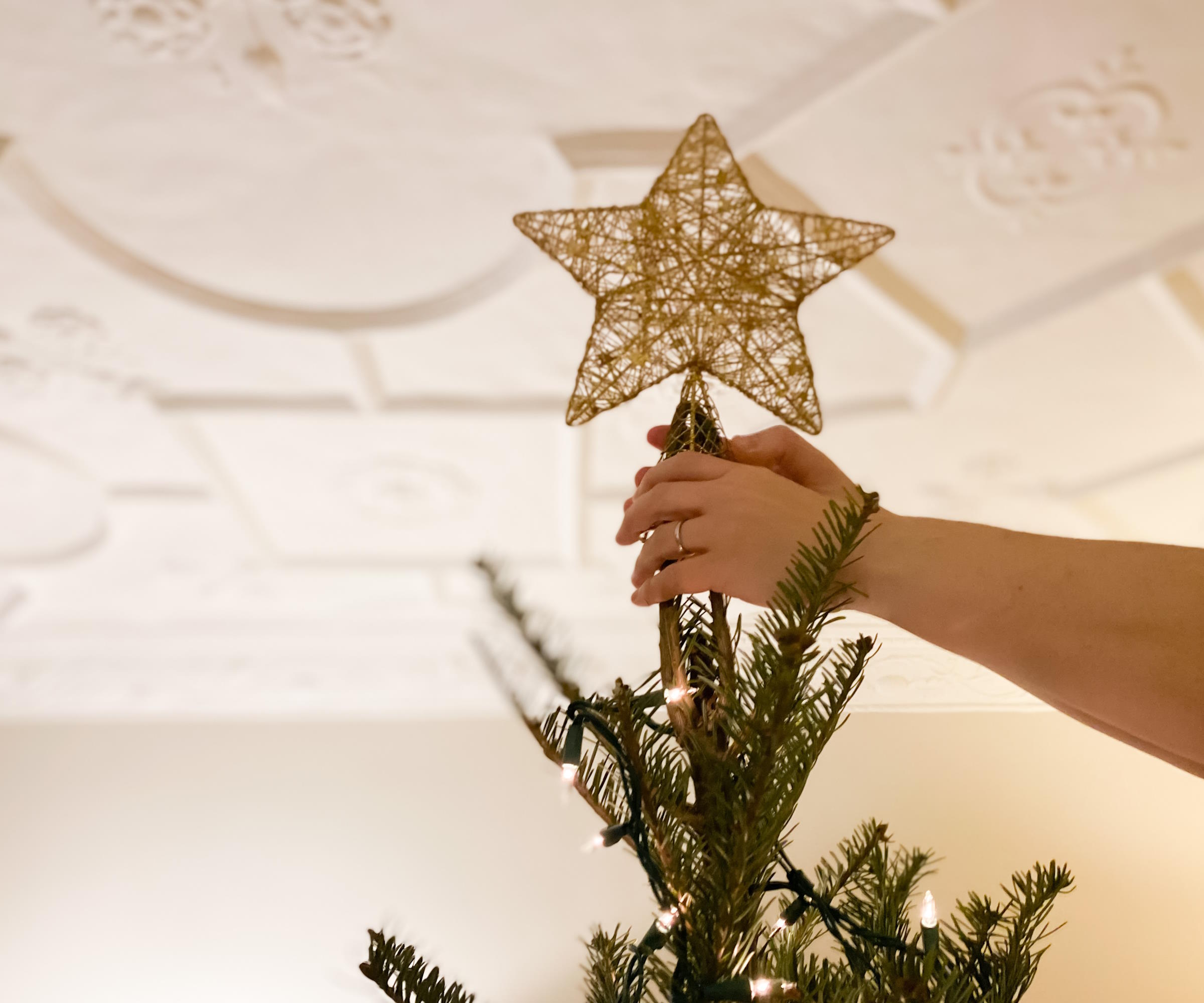
Christmas trees can come in various different shapes, with types ranging from a full and bushy profile to ones with a leaner or slimmer shape. Consider what kind of shape fits the space that you have.
Smirna Kulenovic, design expert at Next Luxury, advises people to ‘choose the shape that attracts you’, adding: ‘Full trees offer a classic look, while slim and pencil-shaped trees are perfect for smaller areas.’
The shape of the tree can also be determined by your aesthetic of Christmas decor. The classic shape of Christmas trees will always impress, covered with traditional lights and baubles, though thinner trees can be used to bring a more modern Christmas decor feel to a room.
3. Be sure of its color
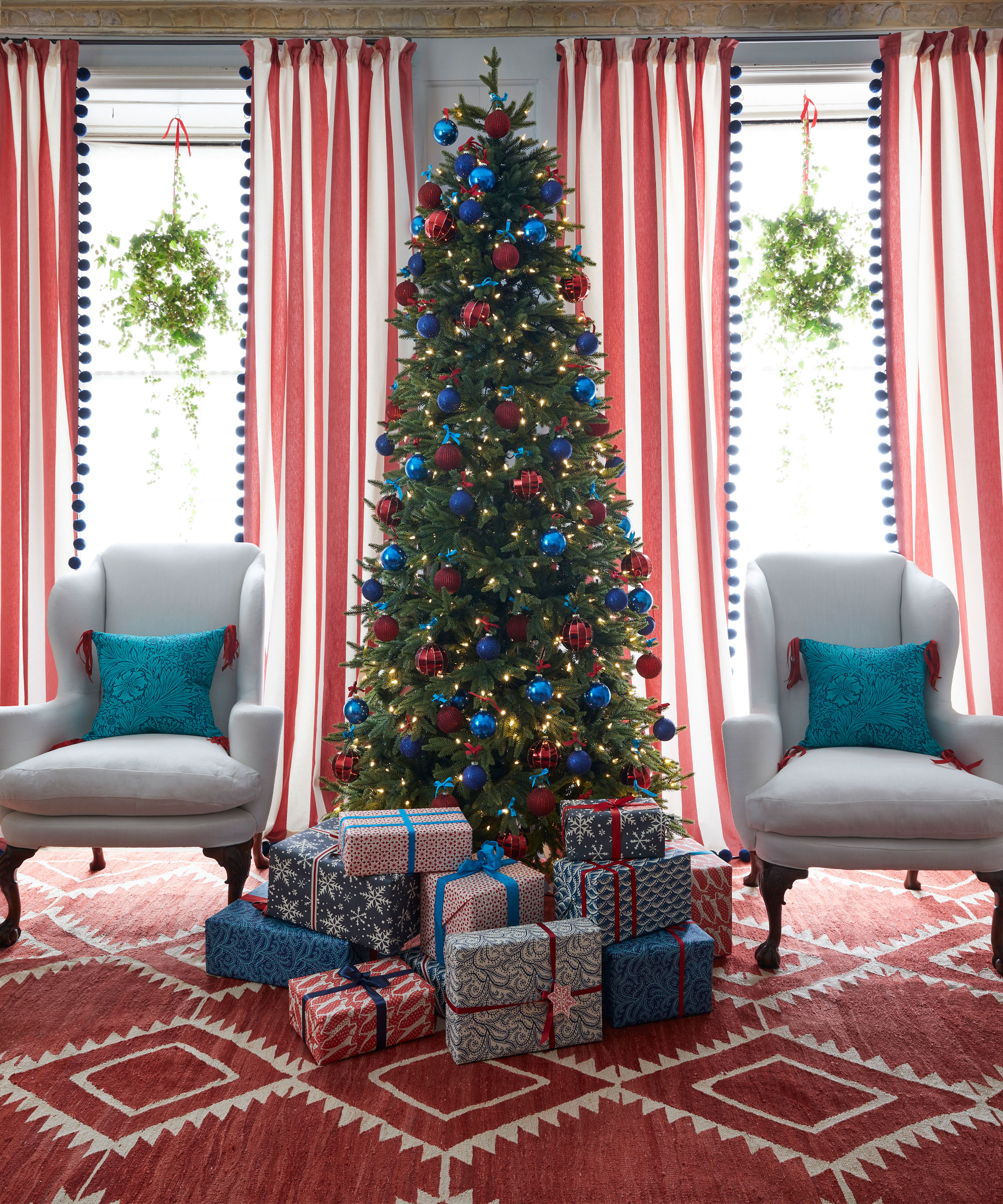
Most people probably simply envisage a classic green Christmas tree, but there are many different nuances of color available to choose from - and considering different shades can make a difference to your theme.
While most trees do have that vibrant dark green color that is so intrinsically-linked to Christmas, other varieties have a more blue or silvery hue. For example, the Colorado Blue Spruce and Noble Fir both have blue-green needles and can be fantastic alternatives to the classic dark green needles of a Norway Spruce.
Fat Albert is a popular variety of Colorado Blue Spruce, ideal for colder regions. Its branches feature dense needles in a rich silver-blue and it is a perfect pick for a living Christmas tree
Think about the needles
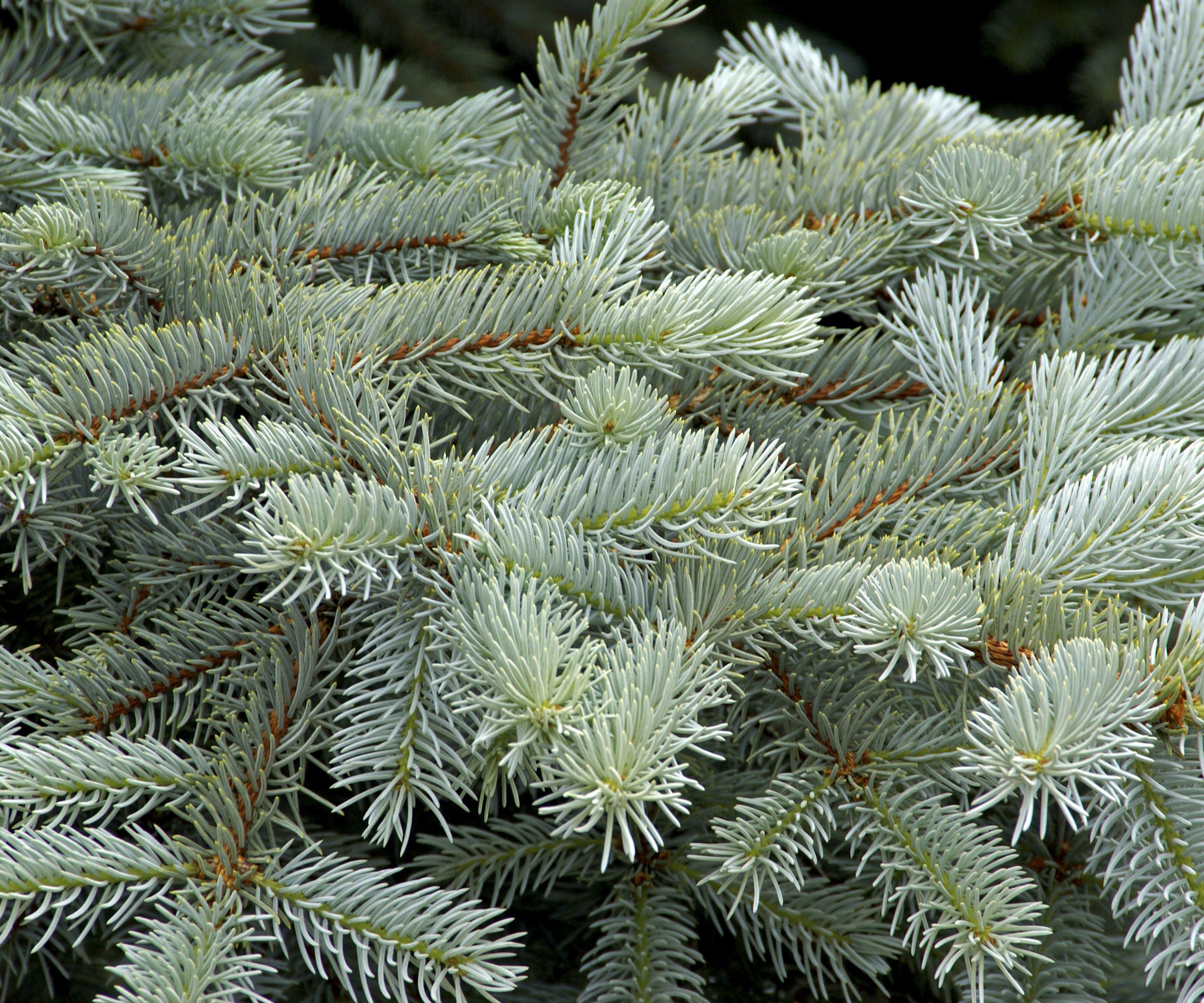
Needles are a necessity to consider - not only how long the Christmas tree is going to hold its needles, but how the type of needles will work in your family home. For example, trees with sharp needles may not be suitable if you have small children or pets.
And how long is the tree going to retain its needles? You do not want a tree to have dropped most of its needles before the big day comes around. If you want to get the Christmas tree up early in December and need it to look good for a long time, then opting for a type that holds onto its needles will be more of a priority.
‘For trees with softer needles that are less prone to dropping, consider a variety like the Canaan Fir or the Eastern Red Cedar,’ says Lindsey Hyland, a gardening expert and the founder of Urban Organic Yield.
She adds: ‘If you have pets or small kids, opting for a tree with softer needles like a Douglas Fir would be sensible.’
When you are out selecting your tree, Smirna Kulenovic recommends choosing one that has ‘fresh and flexible needles’.
She advises: ‘Softly run your hand along the branches to notice any dryness or needle drop. A tree with strong needles will cause less mess during the holiday season.’
FAQs
Which Christmas tree smells the best?
There are many Christmas tree varieties which have fantastic fragrances. The Balsam Fir is often hailed as the best-smelling Christmas tree you can choose.
What color should a Christmas tree be?
The traditional color for a Christmas tree is the classic green, while there is a growing trend for Christmas tree varieties with bluer shades of needles.
There are also now more modern types of artificial trees that can be purchased and these can come in a wide variety of colors, including white, silver, black, blue and red. The choice will come down to personal taste and whether you would prefer a real or artificial Christmas tree.
Keeping a Christmas tree alive is at the forefront of thinking over the festive season, and that process can start right from the moment you start to bring a Christmas tree home.
Protecting your chosen tree from the wind when it is strapped to the car can help prevent it from drying out during transit, too. Once you do get the tree home, standing it in a bucket of water before bringing it indoors can help to reduce needle drop.







